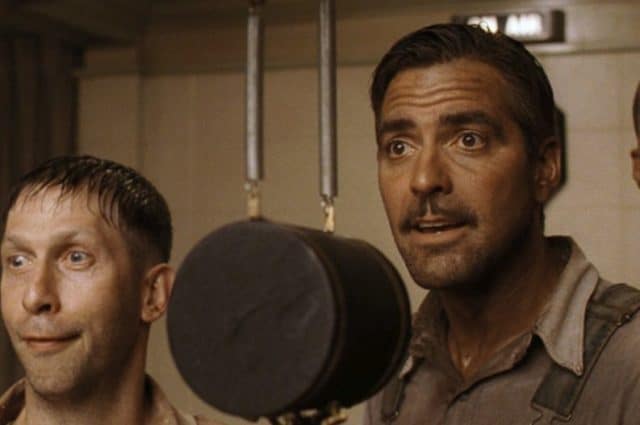
Some people get all kinds of excited when they hear that a movie is loosely based on a classical piece of literature like Homer’s Odyssey, but don’t read into the unseen fine print that “loosely” means that there’s a lot that you simply won’t be able to attribute to the old tales. Oh Brother Where Art Thou did in fact make a lot of very obvious references to the epic story but a lot of others times it went off on its own tangent like it should have. There weren’t a lot of people that outright hated this movie and that’s great since it was a definite hit. George Clooney, John Turturro, and Tim Blake Nelson were spectacular in their parts and Holly Hunter and the rest of the cast were as well. This film featured a lot of well-known faces that have been around Hollywood for a while and they took us back to a time when the world seemed a lot simpler and yet just difficult enough that survival was a continual thing and meant sacrificing your principles a time or two in order to get along. The correlation between this movie and Homer’s Odyssey is seen in many different ways but definitely plays more to a modern crowd than anything but showing visuals that people can understand and in some ways relate to.
Plus the chance of getting to see George Clooney sing shocked just about everyone.
10. George Clooney didn’t understand the script at first.
He sent it to his uncle, who was a tobacco farmer, to read and figure out so that he could understand it better. His uncle however omitted the words that he wouldn’t speak himself and this wasn’t found out until Clooney went to read the lines and the Coen brothers happened to notice it.
9. Despite practicing his singing voice for the role Clooney was dubbed over.
A lot of people went nuts thinking that Clooney had this great of a singing voice, but unfortunately he was dubbed over despite all the practice he’d put into it. Singer Dan Tyminski was utilized for singing all the parts that Everett was responsible for. But give Clooney some credit, he really made it look like he was the one doing the singing, which means his acting is as good as it’s always been.
8. The prisoner’s chant from the beginning was an old chain-gang recording.
The Coen brothers didn’t cheap out on this film as they wanted as much of the real life experience as they could get. Obviously it was going to be a dramatic comedy based upon an old tale that was epic in the making and could get a lot of people’s attention, but the music used for the time period and the setting was absolutely spot on.
7. Man of Constant Sorrows was first released in 1913.
Just when you think that someone came out with something great and original you get to find out that it was done before. This song was published by Richard Burnett well over a century ago. Its updated version was obviously something that might not have existed in its original form.
6. The Coen brothers had never read the Odyssey.
It’s pretty obvious that there’s enough use of the Odyssey in pop culture that they wouldn’t have to read every single word. TV shows and movies have been using the Odyssey for so long that all the Coen brothers likely had to do was read a few footnotes to get the feel of the story and then go from there.
5. Babyface Nelson died three years before the setting of this film.
Plus, he wasn’t reputed to be the bipolar mess he turned out to be. He was killed during a shootout with the FBI instead of being electrocuted, and he was known for being extremely temperamental and for his itchy trigger finger.
4. The American Humane Society didn’t realize at first that the animals being harmed in the film were digitally added.
The studio had leftover digital copies that they were able to use since they’d had to use digitally-created cows in Lake Placid. The Human Society though about flipped their lid when they believed that real cows were being shot to pieces and run over for the amusement of the audience.
3. Tim Blake Nelson did his own singing for In the Jailhouse Now.
He has a pretty decent voice and can carry a tune very well. Clooney did his best to practice and make the cut but Nelson just had to sing.
2. Tommy Johnson was based on a real character.
The legend of Tommy even selling his soul to the devil to become a successful blues musician has been passed down throughout history as well, though it’s been falsely attributed to Robert Johnson, who was a contemporary of Tommy’s.
1. A lot of the extra used for the Klan meeting were African Americans.
If this isn’t ironic then I don’t know what is. Many of these extras were also part of a military troupe.
It’s still a great movie to this day.
 Follow Us
Follow Us






Are you totally going to focus on the music while leaving-out that the song “Angel Band”, basically “featured” at one point in the film (& credited in the soundtrack as something like “Traditional”) was far-more modern, since Monkee Mike Nesmith said in the 1990s he wrote it?!
Honestly TJChurch it was more about the movie than the music. Had it been about the soundtrack then yes, I would have added in Angel Band and a host of other tracks that I happen to like. But this was movie facts, and therefore I didn’t focus on the music. Thanks for your comment though.